
 The mode of enfolding the dead
The mode of enfolding the dead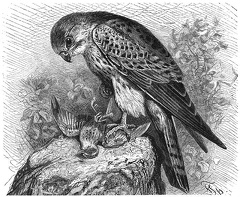 Kestrel
Kestrel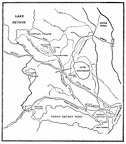 New Environs of Ekaterinburg
New Environs of Ekaterinburg Plan of Ipatiev’s House and Grounds and of Upper and Basement Floors
Plan of Ipatiev’s House and Grounds and of Upper and Basement Floors Jesus on cross
Jesus on cross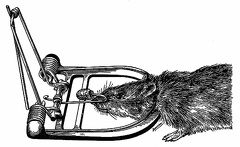 Method of baiting guillotine trap
Method of baiting guillotine trap Jesus on the cross
Jesus on the cross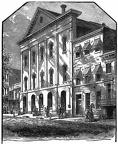 Ford’s Theatre, where President Lincoln was assassinated
Ford’s Theatre, where President Lincoln was assassinated House where the President died
House where the President died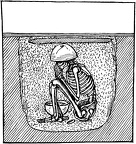 Urn burial
Urn burial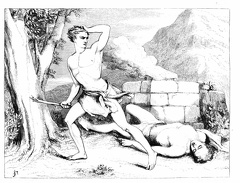 The Death of Abel
The Death of Abel Hidatsas burial scaffolds
Hidatsas burial scaffolds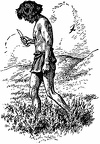 When a man mourned he cut off his hair, painted his body with white clay
When a man mourned he cut off his hair, painted his body with white clay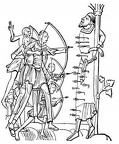 Martyrdom of St. Edmund by the Danes
Martyrdom of St. Edmund by the Danes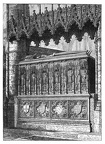 Tomb of Edward III. in Westminster Abbey
Tomb of Edward III. in Westminster Abbey Brass to Sir John D’Abernon
Brass to Sir John D’Abernon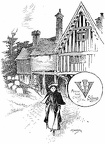 The Old Lychgate, Penshurst
The Old Lychgate, Penshurst Brass to a merchant
Brass to a merchant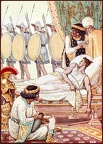 With an effort he looked at them as they passed
With an effort he looked at them as they passed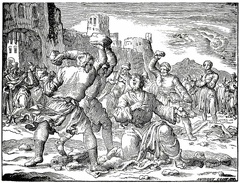 Stoning of Stephen, the first Christian martyr
Stoning of Stephen, the first Christian martyr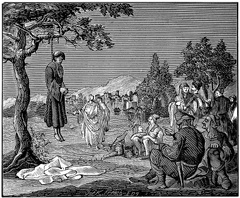 Luke hanged on an olive tree
Luke hanged on an olive tree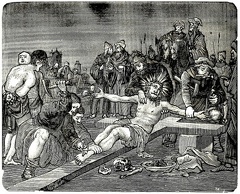 Crucifixion of Jesus Christ
Crucifixion of Jesus Christ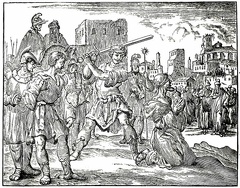 Beheading of James, the son of Zebedee
Beheading of James, the son of Zebedee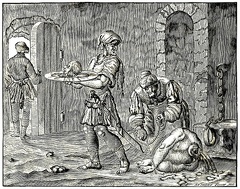 Beheading of John The Baptist
Beheading of John The Baptist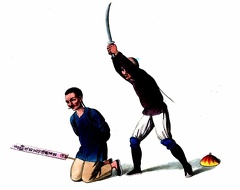 The Manner of Beheading
The Manner of Beheading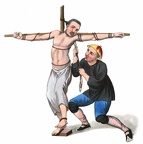 The capital Punishment of the Cord
The capital Punishment of the Cord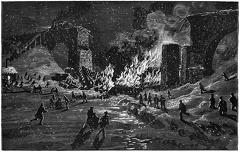 The Ashtabula Disaster
The Ashtabula Disaster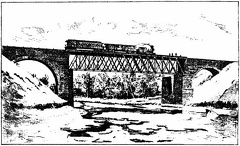 The Old Bridge
The Old Bridge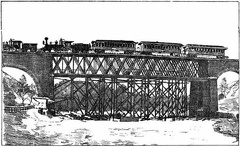 The new bridge, with temporary underpinning
The new bridge, with temporary underpinning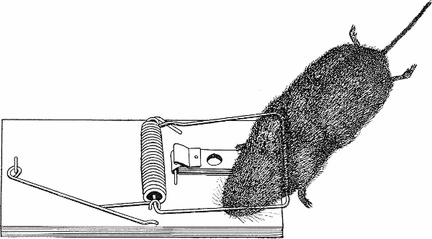 Field mouse caught in an unbaited guillotine trap
Field mouse caught in an unbaited guillotine trap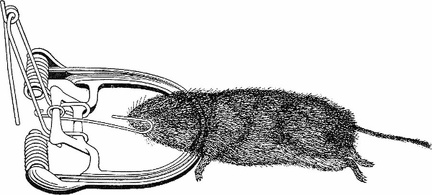 Field mouse caught in baited guillotine trap
Field mouse caught in baited guillotine trap The Centralia Conspiracy
The Centralia Conspiracy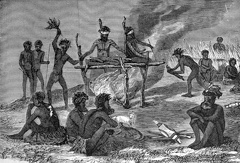 Australian Natives Burning their Dead
Australian Natives Burning their Dead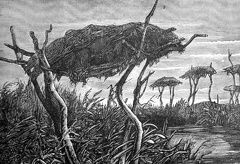 Indian Burial Ground
Indian Burial Ground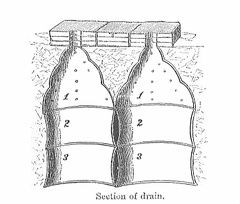 Section of Drain
Section of Drain Chaldean Jar-Coffins
Chaldean Jar-Coffins Chaldean dish-cover tombs
Chaldean dish-cover tombs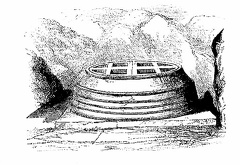 Chaldean Tomb
Chaldean Tomb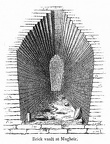 Brick Vault at Mugheir
Brick Vault at Mugheir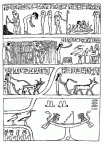 Anhai bowing before her father and mother. The Elysian Fields. From the Papyrus of Anhai (XXIInd dynasty)
Anhai bowing before her father and mother. The Elysian Fields. From the Papyrus of Anhai (XXIInd dynasty)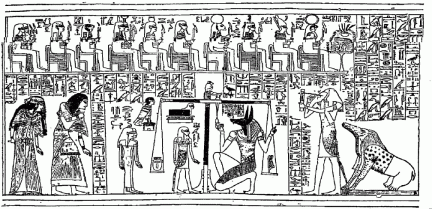 The weighing of the heart of the scribe Ani in the Balance in the presence of the gods
The weighing of the heart of the scribe Ani in the Balance in the presence of the gods The soul of Rā
The soul of Rā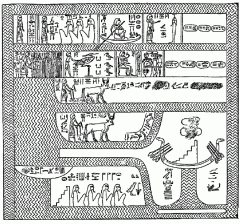 The Elysian Fields of the Egyptians according to the Papyrus of Nebseni (XVIIIth dynasty)
The Elysian Fields of the Egyptians according to the Papyrus of Nebseni (XVIIIth dynasty)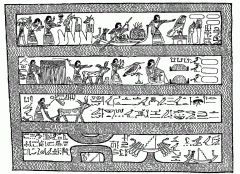 The Elysian Fields of the Egyptians according to the Papyrus of Ani (XVIIIth dynasty)
The Elysian Fields of the Egyptians according to the Papyrus of Ani (XVIIIth dynasty)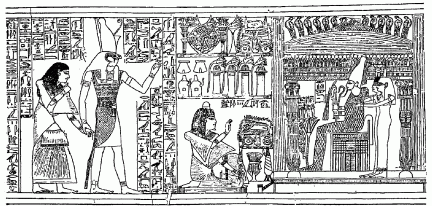 Horus, the son of Isis, leading the scribe Ani into the presence of Osiris, the god and judge of the dead
Horus, the son of Isis, leading the scribe Ani into the presence of Osiris, the god and judge of the dead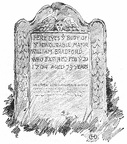 One of many old stones on Burial Hill
One of many old stones on Burial Hill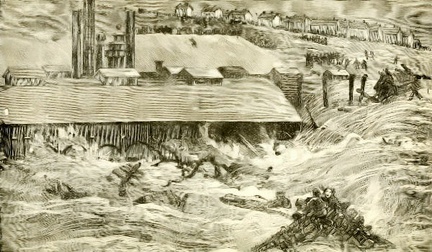 The flood strikes the Cambria iron works
The flood strikes the Cambria iron works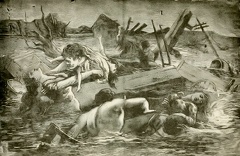 Frightful struggles for life
Frightful struggles for life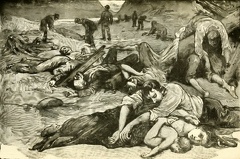 Recovering the bodies of victims
Recovering the bodies of victims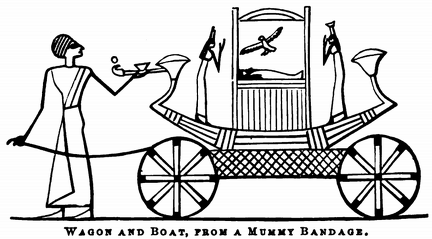 Wagon and Boat, from a mummy bandage
Wagon and Boat, from a mummy bandage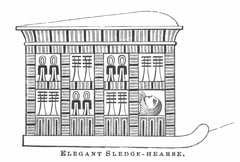 Elegant Sledge-Hearse
Elegant Sledge-Hearse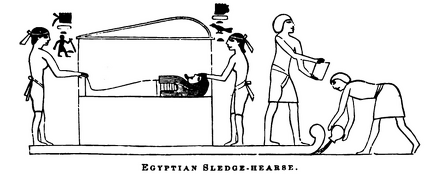 Egyptian Sledge-Hearse
Egyptian Sledge-Hearse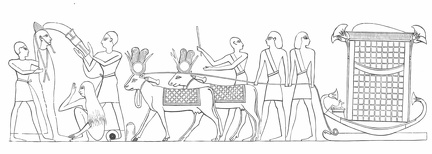 An Egyptian Funeral Cortege
An Egyptian Funeral Cortege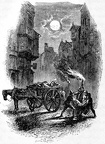 The Plague in London
The Plague in London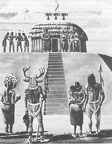 Death of a chief
Death of a chief Indian gravestone showing the totem of the Turtle
Indian gravestone showing the totem of the Turtle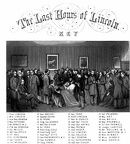 The Last Hours of Lincoln
The Last Hours of Lincoln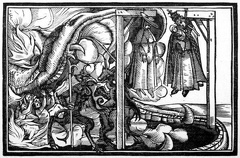 Pope Joan
Pope Joan Death of General Johnston
Death of General Johnston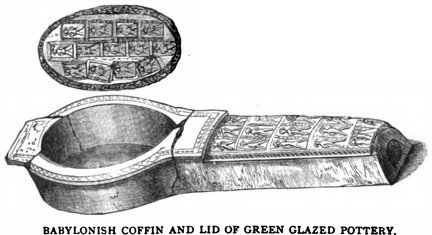 Babylonish Coffin and Lid of Green Glazed Pottery
Babylonish Coffin and Lid of Green Glazed Pottery



